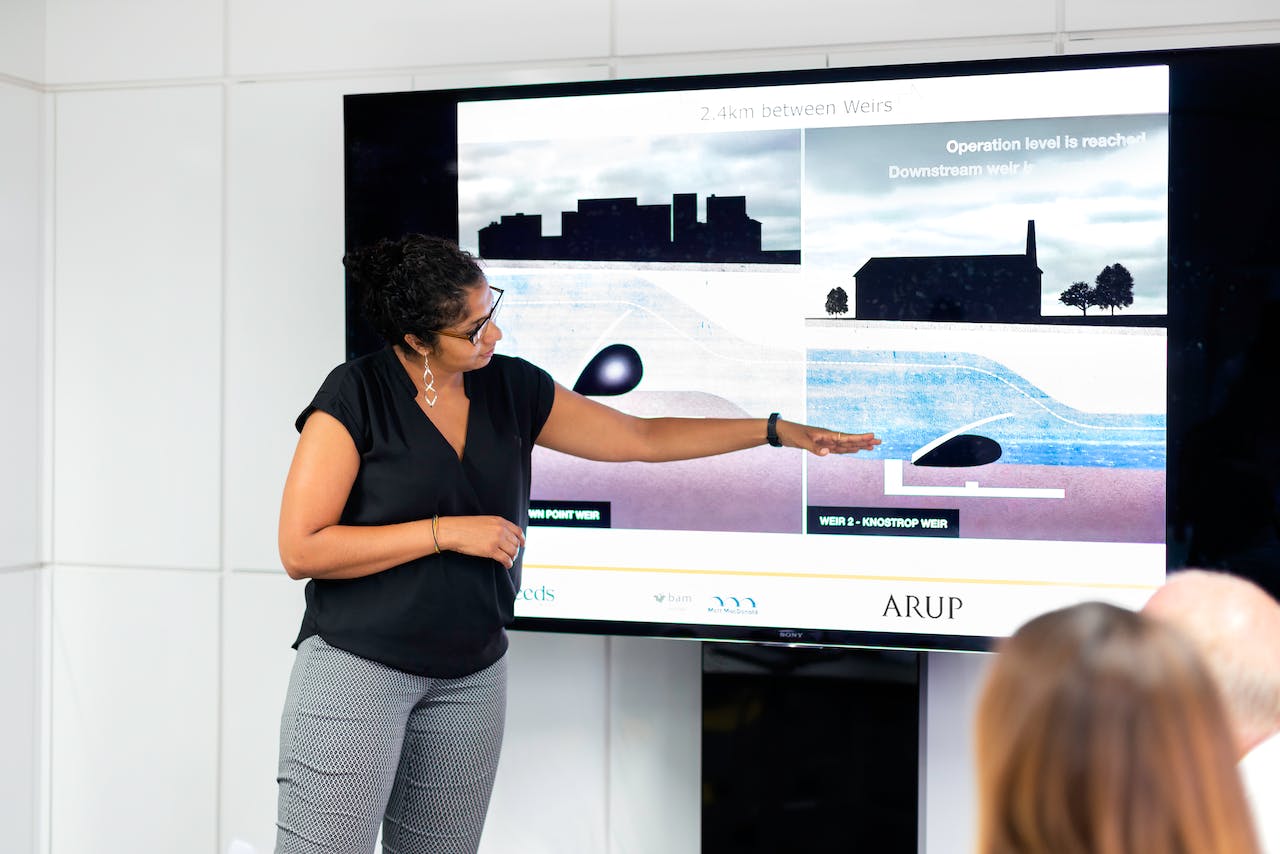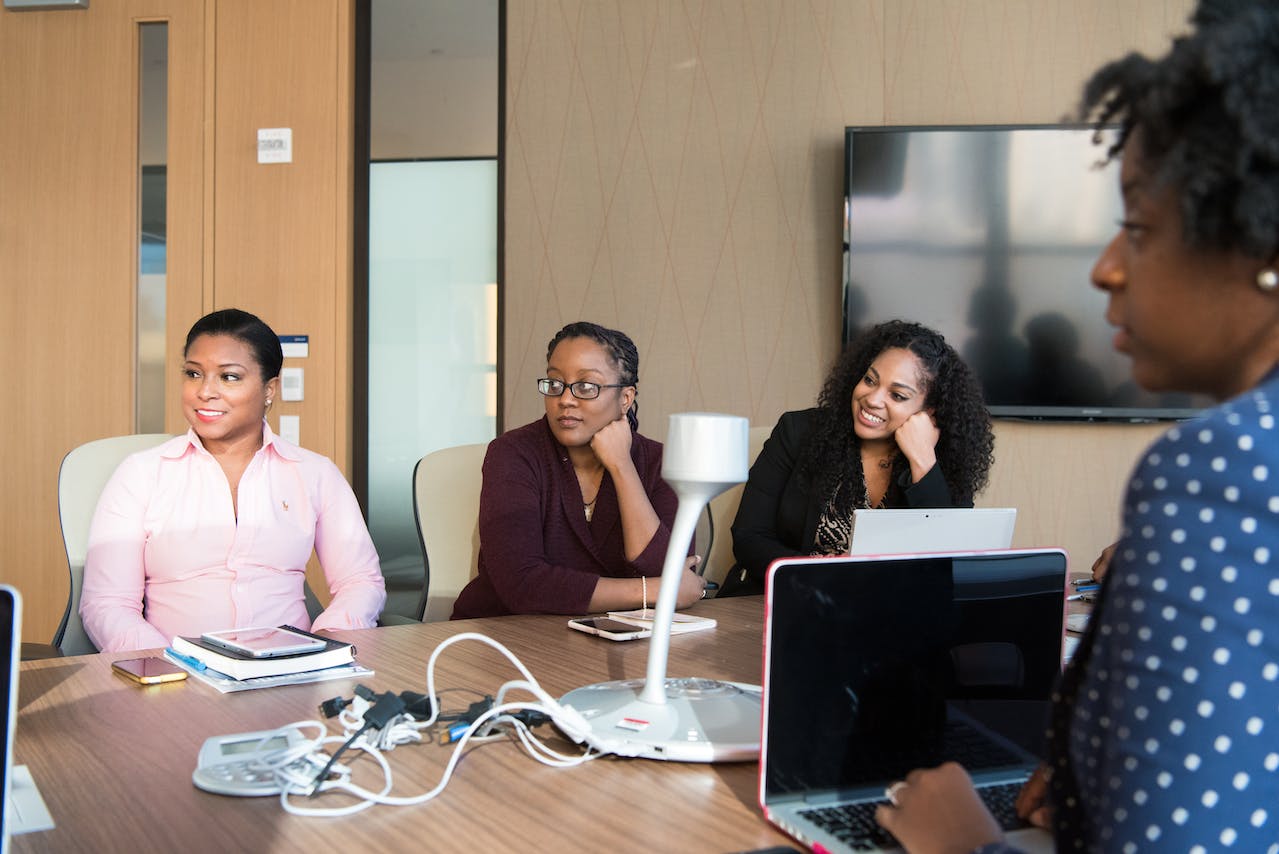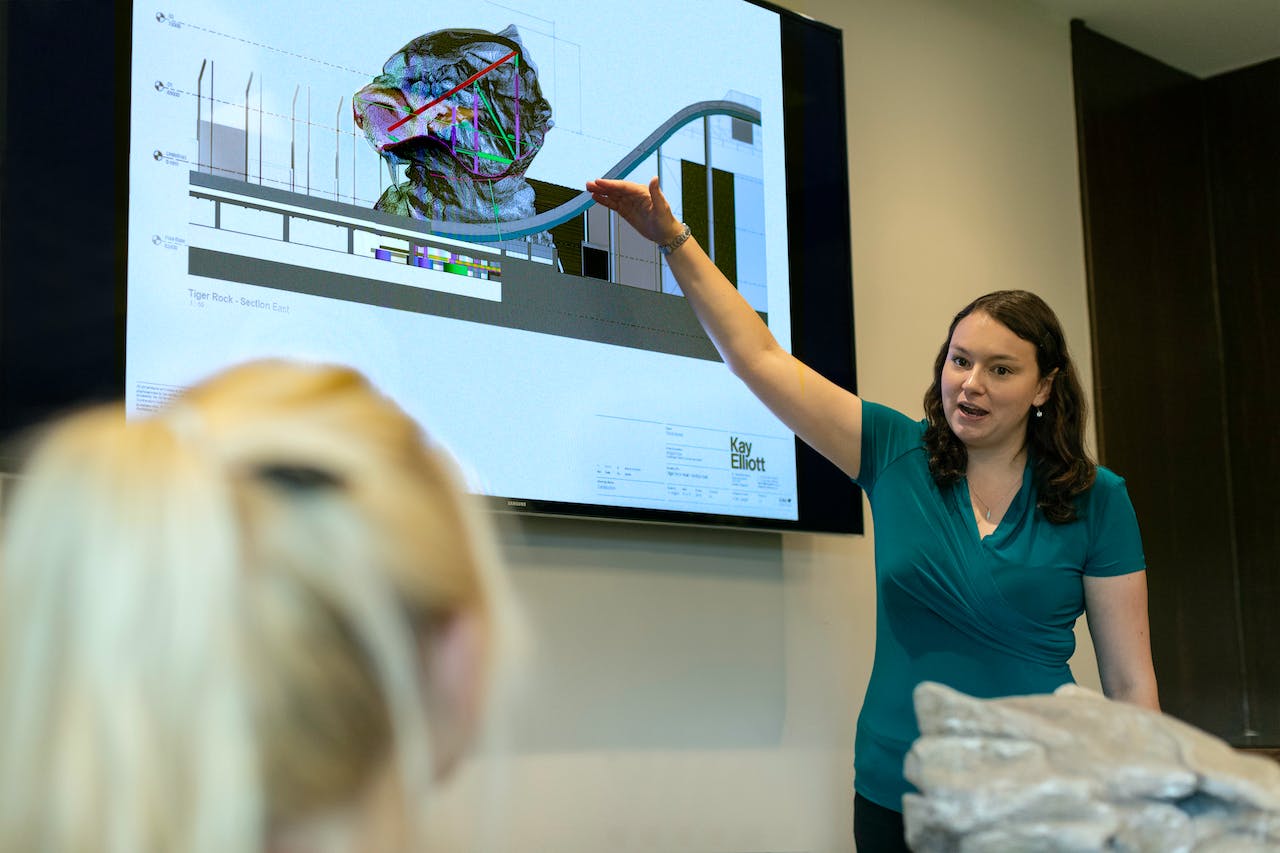
Success in today's fast-paced corporate environment depends on having excellent communication. Meetings are essential platforms for idea exchange, decision-making, and developing teamwork.
Nevertheless, the conventional strategy of lectures that are primarily text-based and boring frequently fails to captivate and motivate attendees. This is when the transformative power of creative images during meetings really shows.
People are naturally drawn to, can be simplified by, and resonate with visual communication. Our minds are naturally drawn to pictures, graphs, and charts that break down complicated ideas into bite-sized chunks in an information-overloaded environment.
Dynamic animations and eye-catching infographics are just two examples of creative visuals that can bring life to otherwise dull conversations and make them memorable and engaging.
In this article, we embark on a journey into the realm of creative visuals and explore why they are indispensable in contemporary meetings. We will delve into the ways these visuals enhance engagement, foster collaboration, and ultimately drive success in diverse businesssettings.
What Is Visual Communication?
The process of representing information using images in order to communicate is known as visual communication. The primary purpose of visual communication is to give the information conveyed additional context. People employ visual communication to illustrate the audience's emotions, which helps to humanize the message.
Additionally, visual communication may be used by a broad spectrum of individuals and helps the audience grasp the notion conveyed. Written or spoken communication is very different from using visual communication.
Visual communication is incredibly effective and is absorbed by people more quickly. It takes some mental power to interpret written or spoken messages, and occasionally, people may have trouble understanding what is being expressed. However, information conveyed visually is often clear-cut and intelligible.
The Power Of Visual Communication
Visual communication is a powerful, cross-linguistic technique (CLI) that appeals to our natural preference for visuals and breaks down linguistic boundaries. The capacity to communicate concepts, thoughts, and feelings through images is not only advantageous in today's overly information-rich environment but also essential.
The ability of visual aids to elicit strong feelings, improve comprehension, and clarify complicated ideas is what gives them their strength.
Above all, visual communication is excellent at making complex concepts simple. Since images are processed by our brains more quickly than words, visuals are a great way to condense complicated information into forms that are easy to understand.
For example, infographics, graphs, and charts can take mountains of data and turn it into visual narratives that viewers can quickly understand and identify trends, patterns, and insights. As a result, players in the business sector may make decisions more swiftly and effectively by evaluating the information at hand and acting appropriately.
Additionally, images have the fantastic power to arouse feelings and make an impression that lasts. Simple writing frequently falls flat emotionally, but images, whether it's the wonder of a breathtaking picture, the comedy of a well-drawn cartoon, or the empathy evoked by a moving graphic, may evoke strong emotions instantly.
This emotional resonance makes the message more memorable and increases the likelihood that it will be remembered and acted upon. Visual communication is a potent tool that evokes strong feelings, crosses cultural divides, and simplifies complexity.
Using images to their fullest potential is crucial for efficient marketing, education, and communication in today's information-rich environment. Creative images change how we see, comprehend, and engage with the world around us, whether they are used to deliver information, tell a narrative, or evoke a mood.
Types Of Creative Visuals
Images
A crucial component of every message is visual communication. Images have the potential to be very potent communication tools that can effectively reach a large audience.
Pictures have the power to arouse feelings in the viewer and can establish a powerful bond with them. It is crucial to think about how your audience will be affected by the visuals you include in your work.
Icons
One of the earliest and most widely utilized types of visual communication is iconography. It's a kind of graphic design where pictures or symbols represent thoughts, ideas, or activities. Icons are often practical tools for making an excellent first impression or delivering a message.
They may be tailored to fit the branding of any organization and are frequently straightforward to grasp. Digital media may also employ iconography to convey information rapidly and readily. Icons are a helpful tool for communicating with both clients and coworkers, but it's essential to take caution while using them to prevent unintentional offense.
Graphics
For any type of visual communication, including websites, presentations, and commercials, graphics are crucial. Visuals make complex material easier to understand and make the user experience more enjoyable.
Additionally, they can be employed to call attention to particular parts or emphasize significant aspects. Indeed, images are often so compelling that they may take the place of written words.
Animated Graphics
An increasing number of people are using motion graphics to assist in conveying their thoughts as technology develops. Motion graphics may be used for many purposes, such as telling a story or providing information with a visual viewpoint, or they can be utilized to make an exciting film or internet commercial.
Motion graphics have a plethora of applications, and their increasing prominence in online media is a natural consequence of their expanding significance in visual communication.
PowerPoint
Because it's easy to make visually appealing and professional presentations and because it's easier to edit and rearrange information than other visual aids, Microsoft PowerPointis used in meetings on a regular basis.
A variety of visual elements that you might add to the slides will help the audience concentrate better. Slideshows are also often more manageable for the audience to view than other visual aids, and you don't have to turn your back on them. However, if this program is not used correctly, your presentation may appear amateurish.
Videos - 3D Visualization Of Ideas
The most fantastic approach to convey the concept is through videos. Combining audio with video enhances the content's value. It makes an excellent impression to show that you are willing to go above and beyond for excellence. Since it will have a more significant effect on your audience, this will be an addition to your fundamental visual content marketing approach.
Videos are also an excellent tool for explaining the goods and services your company provides. Any video can be included in your material. You may include how-to films, testimonials, explainer videos, and demonstration videos, for example. Regardless of the decision you make, remember that your films should reflect the values of your company.
How To Prepare Creative Visuals For Meetings?
- Consider how a visual tool could help you convey your point. What action do you want the viewers to take?
- Make sure your visual assistance corresponds with what you're saying, or else the audience may need clarification.
- Make sure to overcrowd the image since it might appear disorganized and hazy.
- Visual aids ought to be of the highest caliber, succinct, and transparent.
- Maintain a consistent style by using the same typeface, colors, placements, etc.
- Present facts using charts and graphs.
- Instead of expecting the audience to read and listen at the same time, emphasize your arguments with visuals.
- For instance, there should only be one main idea on each slide in a visual aid.
- Use visual aids sparingly; they are supplements designed to highlight and bolster critical ideas.
- In the event of technological difficulties, make sure your presentation still functions without your visual aids.
- Prior to employing the visual aids, practice with them and get input from friends and coworkers. Find out how they understand the visual assistance and if they can see it well.
Benefits Of Using Creative Visuals At Meetings
Build A More Cohesive Team
Through the use of graphic recording, also known as "visual recording," participants are able to observe the progression of their journey together throughout the length of a meeting or workshop that spans many days, therefore fostering a more cohesive team. The use of visuals enables themes to unfold.
As the participants go ahead together, they are able to review where they have been and where they are going, and they may continue to build on the foundation they have established.
Visuals Create Sticky Memories For Participants
With the use of well-drawn artwork, participants are able to recall a specific discussion, important concept, or message thousands of times better than they would be able to remember a fast remark or a few notes that they have written down. We reach a different region of our brains when we observe images.
Visuals Create An Engaging, Inviting Physical Environment
Space is important. What could prevent you from desiring to work in a more stimulating physical environment? Creativity, emotions of safety, and teamwork may all be increased by having a physical setting that is welcoming. If you want to bring graphics into your meetings, you might attempt the following methods in addition to graphic recording;
- Put together a visual agenda.
- Make use of visuals as tools for brainstorming (look for photos on the internet and place an order for 4x6 prints using your preferred printing provider).
- In order to determine the "temperature" of the room at the halfway point or the conclusion of the meeting, you should develop an interactive graphic.
Visuals Make It Easier To Communicate Outside Of The Meeting Space
When was the last time you found yourself eating those meeting notes that your colleague had handed to you in a beautifully typed format? We have all been in meetings when vital information is created; you may make pledges, engage in conversations about work that has been performed, or take action steps for the future.
However, let's be honest; reading it in an essential bulleted text list only sometimes does justice to the relevance of the topic.
Visuals Have The Ability To Engage Groups More
When you have your participants in the room, crowded around a table, and working together on visual templates, you will notice an immediate change in the nature of the conversation that is going place.
Making use of visual templates enables the attendees of your meeting to interact with one another in a new manner, as opposed to sitting back and talking at one another. People are obtaining knowledge from one another in a manner that is distinct from one another.
Whether they are visual reports or narratives, innovative or out-of-the-box visual communications, or visual templates, to mention a few examples, visuals provide you the ability to transmit information to those who are not actively participating in the meeting and that are not within the scope of the meeting itself.
It is possible to communicate corporate culture behavior or themes, ideas, and action steps to those who were not there in the meeting by using an applicationthat is similar to a card deck. The use of visuals allows for the continuation of the discourse much after the conclusion of the meeting.
Common Challenges When Incorporating Visuals In Meetings
Meetings may be made more engaging, understanding, and communicative by including graphics. It is with difficulties, though. The following are typical roadblocks you may run into while attempting to include images in your meetings;
Information Overload
Finding the ideal balance between too much and too little visual information is one of the main issues. It might be challenging to concentrate on the most important takeaways when your presentation is overflowing with images since this can confuse attendees and dilute the message.
Lack Of Clarity
Overly complicated or ambiguous graphics might confuse people instead of improving their comprehension. Ensuring your graphics are clear, organized, and consistent with your message is crucial.
Technical Problems
Technical issues may cause your presentation to flow poorly. This might involve software, projector, or compatibility concerns when exchanging images. It's critical to do technological tests in advance and have a backup plan.
Time Constraints
Meetings frequently have time constraints, so spending too much time making or interpreting graphics might cut into the length of the conversation. It's critical to strike a balance between talk time and visual information.
Audience Engagement
Engaging people with images might be difficult since some may need to be visually oriented. Using a range of visual forms is essential to accommodating various learning preferences and styles.
Design Quality
Material creators need to have specific design abilities in order to produce visually engaging material. Poor-quality graphics take attention away from your main points and reduce the impact of your presentation. If you need help with design, think about getting it.
Availability
Some participants might have a different level of access to visual content than others, such as those who are visually impaired. To guarantee diversity, it is crucial to offer alternate forms or descriptions.
Interpretation Of Data
Data is often represented visually, such as charts and graphs, but the visuals become helpful if people are able to interpret them. Give careful explanations of data points and patterns.
Frequently Asked Questions
How Can Visuals Transcend Language Barriers In International Meetings?
They convey messages universally, making them accessible to diverse audiences.
Why Is It Essential To Align Visuals With Meeting Goals And Objectives?
It ensures that visuals enhance the meeting's purpose and effectiveness.
Where Can You Find Resources For Creating Creative Visuals For Meetings?
Online tools, design software, and professional designers can be valuable resources.
Conclusion
The importance of creative visuals at meetingsmust be balanced. These dynamic tools transform mundane gatherings into engaging and impactful experiences. Creative visuals simplify complex information, enhance understanding, and stimulate collaboration, making them indispensable in modern business and educational settings.
To harness the full potential of creative visuals, remember to align them with your meeting's goals, keep them clear and concise, and be mindful of your audience's preferences.
Whether you're a business professional, educator, or team leader, incorporating creative visuals into your meetings is a strategic choice that fosters innovation and drives success in an increasingly visual world. So, go ahead and embark on your visual journey to transform your meetings and elevate your communication to new heights.



